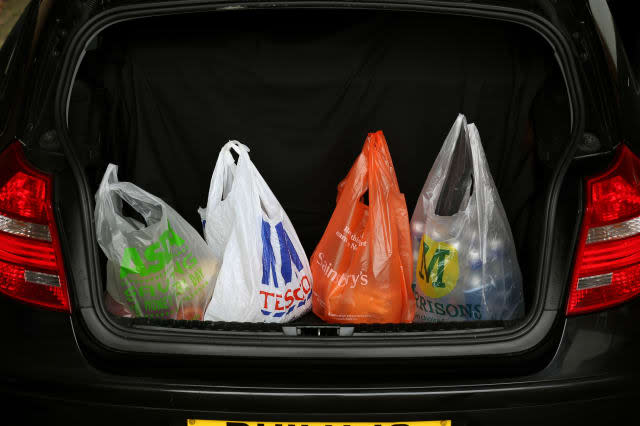Tesco market share is lowest in ten years, thanks to Aldi and Lidl

Tesco's market share has fallen to its lowest in a decade. Gains made by discount supermarkets Aldi and Lidl ate into the market share of all the big four, and at Tesco they pushed it down to 28.3%.
Clearly it's still an enormous share of the market, but the figures from research company Kantar show it is down from 28.8% this time last year and 30.3% the year before. It also said sales fell 0.9% in the past three months.
Tesco's new CEO is trying an array of initiatives to halt the exodus of customers. He announced this week the retailer would send 7,000 head office staff back to work in stores to help ensure good customer service in the run-up to Christmas. It also appealed to employees to create 'magical moments' for customers. So far, he has had some success, as although the supermarket is losing market share, it is doing so more slowly than before.
%VIRTUAL-ArticleSidebar-shopping-guide%
Asda woes
While things look bad for Tesco, they look even worse for Asda, which saw sales fall 2.5%, giving it a 16.6% market share. That's down from 17.2% last year.
Asda said earlier this month that it had suffered its worst three-monthly sales period since it had been bought by US retailer Wal-Mart 16 years earlier. Asda boss Andy Clarke said: "The market is in exceptionally challenging times ... We have certainly hit our nadir. Every business has got to have one and this is ours. We are on an upward trend."
Morrisons also registered a 1.1% fall in sales - giving it a market share of 10.8%, and while Sainsbury's saw a marginal 0.1% sales increase, it still saw its market share fall to 16.3%. Sainsbury's and Asda have regularly swapped position as the second biggest supermarket in the UK, and this time Asda pipped it to the post. The researchers expect them to swap back towards Christmas.
The growers
Meanwhile, Aldi saw sales rise 18% and Lidl 12.8%. Aldi now has a market share of 5.6%, which is an incredible rise from 4.8% this time last year - and has seen it overtake Waitrose in that time.
Lidl, meanwhile, has a market share of 4.1% - up from 3.6% last year. The discounters between them still account for less than 10% of the market, but their rapid growth is eating into the sales of their competitors.
The march of the discounters has been faster and more effective than anyone predicted, and the industry expects it to go still further. Earlier this year Sainsbury's Chief Executive Mike Coupe said the discounters would have almost 15% of the market by 2020. As a result sales at large supermarkets would go from making up 70% of supermarket sales to 60% by 2022.
Iceland also saw market share increase in these figures. Its bid to project a posher image has resulted in a 3.4% rise in sales. Fraser McKevitt, head of retail and consumer insight at Kantar Worldpanel said: "Thanks to recent efforts to create a more premium image for frozen food, as well as new store openings including its Food Warehouse format, Iceland is attracting more shoppers through the door than last year."
Upmarket
The other supermarket seeing gains was Waitrose, which saw a 3.7% increase in sales and a market share of 5.1%. It may have lost its position as the sixth largest supermarket in the country to Aldi this spring, but both are seeing gains - Waitrose is up from a 4.9% share last year and a 4.8% share a year earlier.
Given that the fifth largest supermarket, The Co-Operative, has seen its market share stick around 6.4% throughout this period, there's a good chance Aldi will overtake it within a year, and Waitrose could follow suit by 2022.
Supermarket stories on AOL Money
Morrisons gin beats Gordons in blind taste test
Morrisons in talks over sale of M Local stores
Discount stores save you just £5 a month





